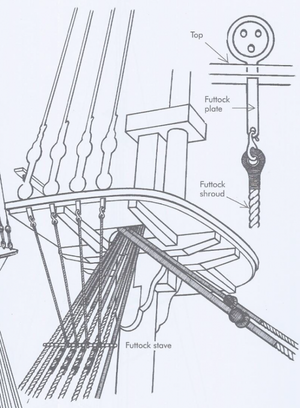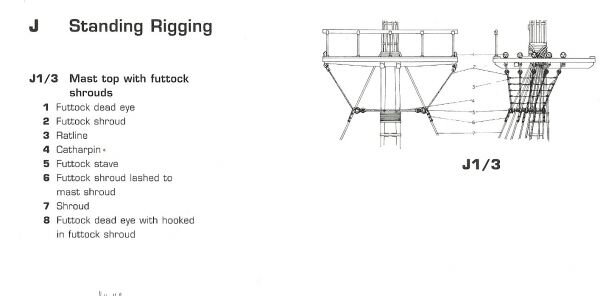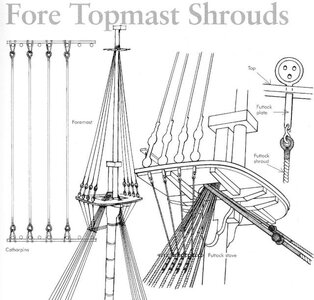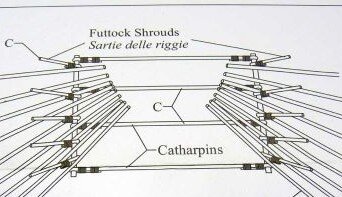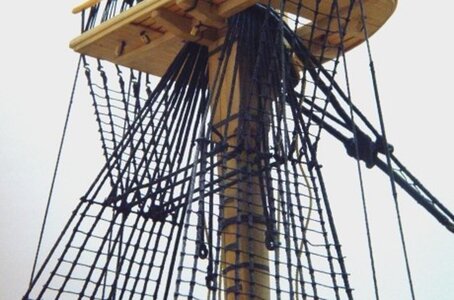The shroud lines were tarred, what about the rat lines?
If the rat lines were not tarred, the nots on the shrouds were still tarred?
What material are the futtocks made? Wood or metal?
On the Santisima Trinidad 1/90 scale what spacing would you think is appropriate betewwen the rat lines?
Thanks in advance
My two cents and opinion.
ratlines were not tarred, also not the knots
What do you mean with ".... futtocks made? Wood or metal?" Futtocks are parts of the wooden frame in the hull. Maybe you show in a sketch, which part you mean?
The futtock shrouds were also rope in the time of your Santisima.....
Maybe also this topic may help, also with the sketches you find there, because we discussed here the same area:
Hi guys I am currently building victory model by mamoli and need some advise on lower shroud ratlines. I have fixed the futtock stave and was wondering whether the top part of the shrouds beyond the staves should also have ratlines. Photo attached. Most photos of models show them without...
shipsofscale.com
The spacing between the steps of a ladder (it is nothing else like a ladder) is nowadays between 25 and 30cm - means in your scale appr. 3,5mm
The distance of ratlines were somehow bigger.
In several publications the distance is mentioned different or better not clearly defined
Brady says "15" in The Kedge-

.
The Kedge Anchor; or, Young Sailors' Assistant (Dover Maritime) [Brady, William] on Amazon.com. *FREE* shipping on qualifying offers. The Kedge Anchor; or, Young Sailors' Assistant (Dover Maritime)
www.amazon.com
Harold Underhill, in Masting and Rigging gives "About 15"
Amazon.com: Masting and Rigging: The Clipper Ship and Ocean Carrier: 9780851741734: Harold A. Underhill: Books
www.amazon.com
and Lees in The Masting and Rigging of English Ships of War, 1625-1860
"were spaced 13" to 15"
An other cornerstone in each private library describing the mast, spars and the complex rigging work should be The Masting and Rigging of English Ships of War, 1625-1860 By James Lees Publisher: Naval Institute Press; 2nd Rev edition (October 1984) Pages: 212 ISBN-10: 0870219480...
shipsofscale.com
So I think 15" means 38 cm would be correct - in your scale 4,22 mm - so between 4 and 4,5 mm




 .
. 
